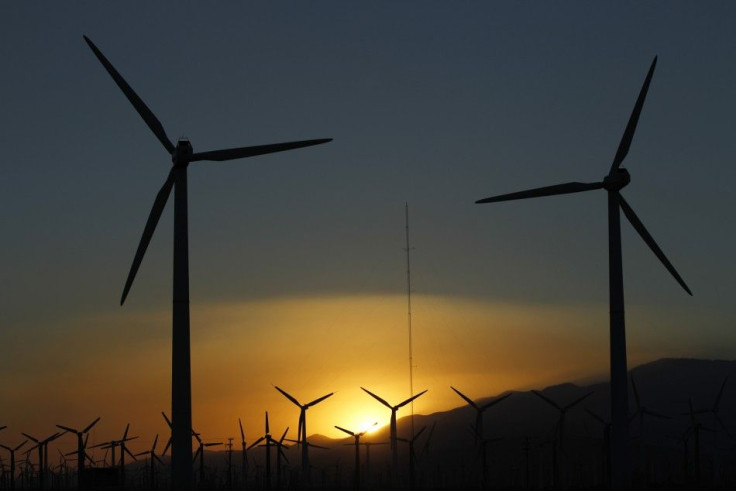Should Wind Turbines Be Allowed To Kill Eagles? Debate Ratchets Up With Bird Group Lawsuit

An ongoing debate among U.S. environmentalists over whether wind turbines should be allowed to kill eagles ratcheted up a notch this week.
The American Bird Conservancy sued the Obama administration Thursday over a new federal rule that the group says could threaten already vulnerable populations of bald and golden eagles. The rule allows wind energy companies to obtain 30-year permits to kill or injure eagles without fear of prosecution, extending previous permit limits by 25 years, the Associated Press reported.
The U.S. Interior Department announced the extension in December after wind energy developers sought the change to reduce their liability. Officials reasoned that longer permits would simultaneously promote wind energy development and reduce impacts on federally protected eagles. They “will help the renewable energy industry and others develop projects that can operate in the longer term, while ensuring bald and golden eagles continue to thrive for future generations,” Secretary of the Interior Sally Jewell said at the time.
But more than 100 wildlife and conservation groups, along with the U.S. National Park Service, railed against the changes. “It is entirely conceivable, and probably even quite likely, that mortality impacts to eagles will get far worse” under 30-year permits, George Fenwick, president of American Bird Conservancy, said in a December statement.
Bald eagles nearly disappeared in the U.S. three decades ago due to habitat destruction, illegal hunting and the use of DDT insecticide. But government conservation efforts and the banning of DDT have helped bring populations back from the brink, and in 2007 the birds were removed from the federal list of threatened and endangered species. Golden eagles are still considered endangered in some states, including New York, but are not federally listed as such.
A recent study by federal and state scientists found that U.S. wind turbines could kill up to 1.4 million birds of all species per year by 2030 as the wind energy industry continues to expand.
The bird conservancy first announced its intent to sue in May, arguing that the Interior Department violated federal laws for environmental and wildlife protection in extending permit limits. The June 19 lawsuit was filed in federal court in San Jose, California, against the Interior’s U.S. Fish and Wildlife Service, which handles the permitting program.
“In the government’s rush to expand wind energy, shortcuts were taken in implementing this rule that should not have been allowed," Michael Hutchins, the national coordinator of the conservancy’s wind energy program, told the AP.
The lawsuit underscores an uncomfortable dilemma confronting the nation’s renewable energy transition: Building more wind turbines helps replace the need for fossil fuel-fired electricity, and thus reduces greenhouse gas emissions and air and water pollution, but in certain cases it can also disrupt natural habitats and kill off scores of birds.
Nearly 50,000 large-scale wind turbines are installed across the United States, generating enough electricity to power more than 15 million average American homes, according to the American Wind Energy Association, an industry advocacy group.
An AP investigation in 2013 documented dozens of eagle deaths at wind farms. While each one is a violation of federal law, the Obama administration to date has prosecuted only one company, Duke Energy Corp., for killing 14 eagles and 149 other birds at two Wyoming wind farms, AP said.
The Fish and Wildlife Service does not comment on pending or ongoing litigation.
© Copyright IBTimes 2024. All rights reserved.




















